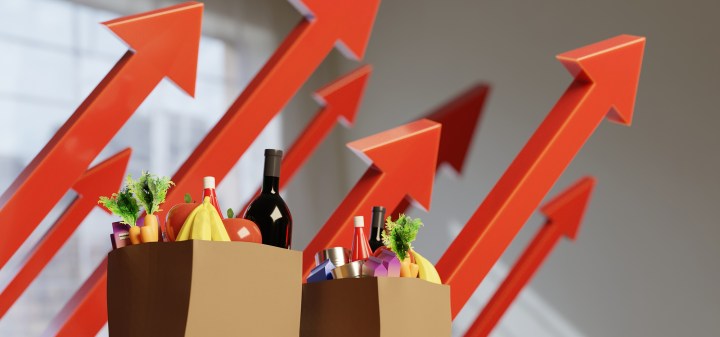FAST-MOVING CONSUMER GOODS
Retail sector’s R593bn in sales driven by higher food prices, not consumption patterns – NielsenIQ report

The latest NielsenIQ State of the Retail Nation report says these price hikes are changing what we eat.
Higher food prices – as opposed to organic consumption growth – are driving growth in the fast-moving consumer goods (FMCG) sector in South Africa, says the latest NielsenIQ (NIQ) State of the Retail Nation report, revealing that the spike in cooking oil prices is affecting consumption patterns. That would be a good thing, were it not driven by price escalations and rather a shift to healthier eating.
The FMCG sector, now worth R593-billion in annual sales (to the end of March 2023) has grown by 13.4% over the past 12 months. This includes both groceries and liquor.
NIQ South Africa’s consumer panel commercial lead, Steve Randall, says the Consumer Price Index (CPI) is often “overrepresented and sometimes misunderstood” when conducting a robust analysis of the real impact of food price increases.
“Overall, CPI is currently sitting at 6.3% (down from 6.8% in the previous month) and, as a result, people say it is cooling, but food inflation is still sitting much higher at 12.2% and has only started to normalise in April/May of this year.
“The Stats SA food inflation figure has wide recognition in the market and is a useful measure, but it can only realistically look at a subset of items and observe prices at a point in time.”
Food prices were up 14.4% year on year in March – the highest rate of food inflation since March 2009. Food is the biggest component of the CPI, accounting for more than 15% of the basket.
Last month’s Pietermaritzburg Household Affordability Index showed year on year, the cost of a basic nutritional food basket of 44 items, for a family of seven, increased by R555.41 (10% up) from R5,571.54 in June 2022 to R6,126.95 in June 2023.
NIQ has barcode-level information of the market, scanned at 10,000 modern trade stores, of around 100,000 FMCG products, which provides its researchers with a rich dataset.
“We use item-level data to calculate inflation and consider items that had sales last year and this year. Due to our granularity, we use a naturally weighted basket (not a statistically estimated basket), which results in a more accurate view.”
Over the past 12 months, NIQ’s research has revealed that the spike in the price of cooking oil has affected consumption patterns.
Cooking oil has increased by 40% during this period and is the biggest contributor towards overall net FMCG inflation, contributing 7.2% to inflation, even though it accounts for less than 2% of total sales.
The price escalation in oil has affected consumer consumption patterns: volumes purchased have dropped steadily over the past three quarters, which shows that consumers are using less of this product (or possibly changing cooking patterns). This has, in turn, spilled over into the purchasing of frozen chicken, dramatically hiking the price of chicken cooked in oil.
Randall says consumers are also shifting to a protein alternative to chicken, like pork and tinned protein.
Mielie meal has shot up by 17.6% year on year, while rice inflation has only risen by 1%. Coffee prices, meanwhile, have risen by 15.5% due to decreased promotion and higher everyday prices. DM



















 Become an Insider
Become an Insider
Comments - Please login in order to comment.